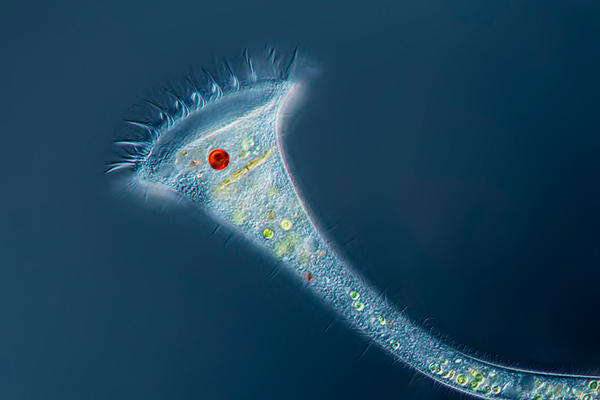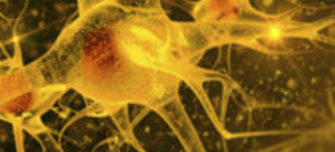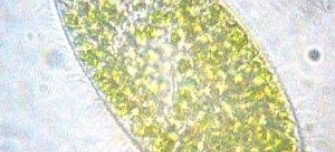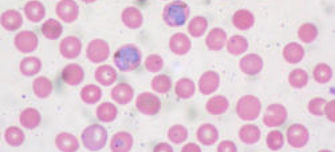Protozoa
Protozoa are single celled organisms. They come in many different shapes and sizes ranging from an Amoeba which can change its shape to Paramecium with its fixed shape and complex structure. They live in a wide variety of moist habitats including fresh water, marine environments and the soil.
Some are parasitic, which means they live in other plants and animals including humans, where they cause disease. Plasmodium, for example, causes malaria. They are motile and can move by:
- Cilia - tiny hair like structures that cover the outside of the microbe. They beat in a regular continuous pattern like flexible oars.
- Flagella - long thread-like structures that extend from the cell surface. The flagella move in a whip-like motion that produces waves that propel the microbe around.
- Amoeboid movement - the organism moves by sending out pseudopodia, temporary protrusions that fill with cytoplasm that flows from the body of the cell.

Videos
Learn more about protozoa
-
Of mice and men: are billions victim to Toxoplasma mind control?
Toxoplasma gondii resides silently in the brains of billions of us worldwide. For a long time, infection with T. gondii was considered harmless but recent evidence suggests that it modulates neurotransmitter levels, changing personality and behaviour to increase its opportunity for onward transmission.
-
Malaria policy briefing
Malaria is an infectious disease caused by a single-celled parasitic organism, Plasmodium, which infects the blood and liver.
-
Friends with benefits, or exploitation?
Endosymbioses – where one species lives inside another – are found throughout microbiology. For example, Zooxanthellae are protozoa that live inside corals, the marine invertebrates that build coral reefs.
-
An ancient remnant inside the malaria parasite
Malaria is caused by protozoan parasites of the Plasmodium genus. These parasites are transmitted via mosquito bites, and several different species are known to infect humans. But look inside a Plasmodium cell itself and you find something rather unexpected – a cellular structure that looks remarkably like a chloroplast.
Podcasts






